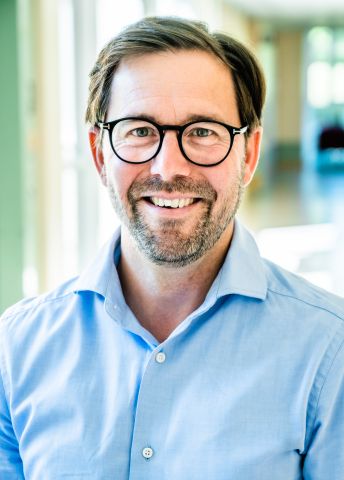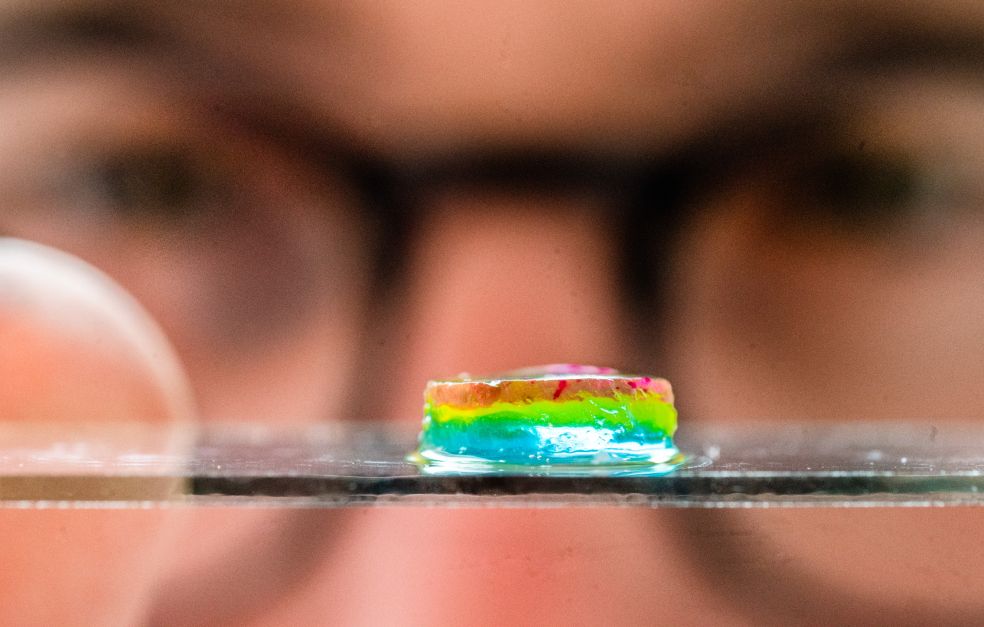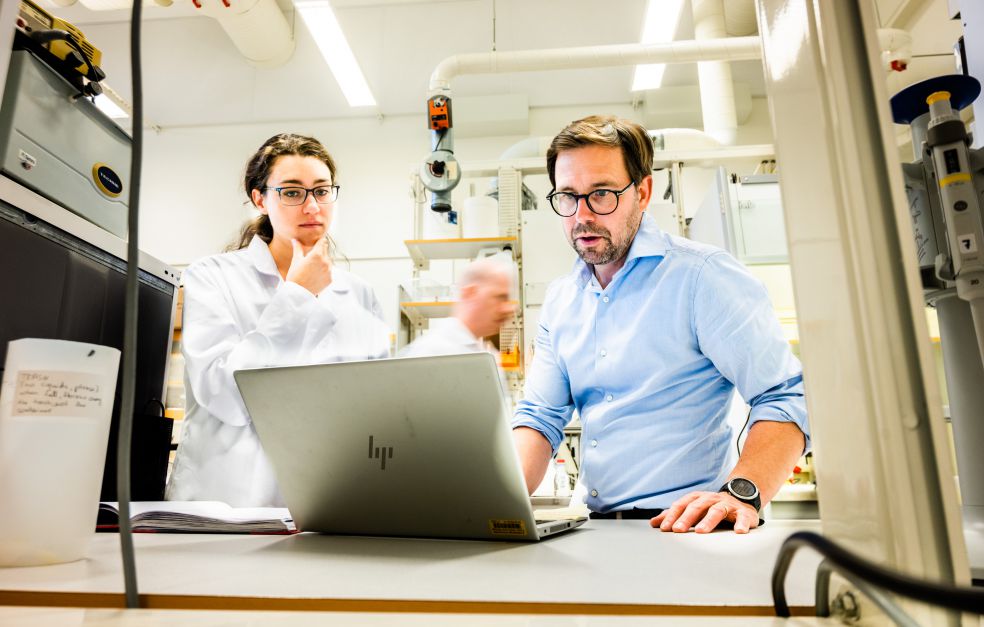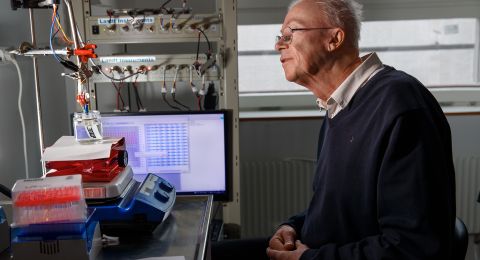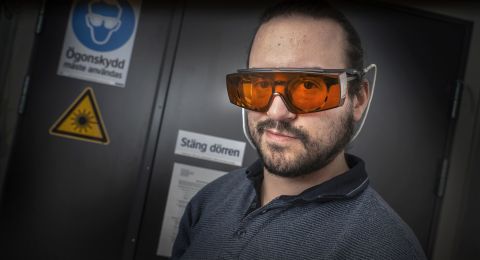A race is currently under way to find ways of making human organs and tissues using 3D printers. Lab-manufactured tissue may come to play a key role, both in medical research and in drug development. At Linköping University Daniel Aili is developing water-rich gels (hydrogels) and strategies that makes it possible to print cells of various types, and study in detail how tumors grow.
Daniel Aili
Professor of Molecular Physics
Wallenberg Academy Fellow, prolongation grant 2021
Institution:
Linköping University
Research field:
Design of synthetic materials inspired by nanostructures in nature
3D printing technology has made enormous strides since it was launched back in the mid-1980s. 3D printers are now used to manufacture a wide range of products, from consumer plastic goods to vehicle components and entire buildings. The technology quickly attracted interest in its potential for medical applications. The first examples included printed dental implants, but attention quickly turned to the idea of printing living cells. When the cells are encapsulated in hydrogels they can be used as “ink” in a 3D printer.
3D printed organs
Cells cultured in hydrogels can form simple organ-like structures, in the form of tissues and organs, such as intestines, kidneys and skin. But although there is huge potential for printing human “spare parts,” the challenges are even greater. Nonetheless, Aili, who is a Wallenberg Academy Fellow, believes we will see an enormous range of applications for 3D printing technologies in medicine. One of them will be in the development of new tissue model systems for evaluating drugs without testing them on animals, and in cancer research.
“At present cancer cell growth is studied either in very simple cell systems or in animal models. But it’s often challenging to study individual mechanisms in tumor cells and their interactions with other cells in animal models. If we can fabricate and culture biologically realistic tumors in the laboratory environment, we’ll have better prospects of accelerating both research on tumor biology and drug development,” says Aili.
His research team is developing new types of hydrogels that make it easier to encapsulate and print cell structures. To work, the hydrogel must have properties that can change over time. It must protect the cells during and after the printing process before transitioning from liquid to solid form. The solid form gives the cells a hydrated 3D supporting matrix in which they can grow.
Standing in Aili’s lab at Linköping University is a highly advanced 3D printer for biological materials. His research team has developed a series of hydrogels for the printer to suit different cell forms, such as heart cells, liver cells, and neurons. Tailored materials are used to build the right microenvironment for each cell type.
“We’ve developed a toolbox of polymers and protein-like molecules, peptides, that we can use to give the hydrogel the right properties for different applications and cell types. We’re interested in studying how these molecular components can be refined to derive additional benefit from the cells’ own self-organizing ability. The overall aim is to imitate nature’s own way of creating tissue,” Aili explains.
Controlling cell development
All cells are preprogrammed to self-organize to form various kind of tissues and organs. This occurs naturally in the body to fulfill a wide range of functions: from development of a fertilized egg to wound healing. Aili’s goal is to find ways of exploiting this ability so as to control or facilitate development of more complex structures. This applies especially to blood vessels needed to ensure the 3D printed cells receive enough oxygen and nutrients to survive. To succeed, the researchers need to develop hydrogels whose chemical properties can be adapted, both by the growing cells, and by the researchers performing the experiments.
“We call it bioprinting in four dimensions – time being the fourth. If we can adapt the environment around the cells to keep pace with their growth, or to study a specific dynamic process, we’ll have a unique opportunity to influence their self-organization to produce more complex structures.
The aim is to create more advanced miniature organs, known as organoids, with a longer lifespan and greater biological relevance than current simple tumor models. The researchers are focusing particularly on breast cancer, given that it is one of the commonest forms of cancer.
“But it’s difficult, since tumors are made up of more than just cancer cells. The tumor interacts with other cell types in the tissue so it can grow and spread. A good tumor model must therefore be able to take into account cancer cell interactions with the matrix and with other tumor cells. Also of great importance is the supply of nutrients and oxygen, which normally occurs via blood vessels that form and grow in between the cells. If we succeed in this, it may make it easier to develop therapies that are better tailored to the individual.”
More applications
The hydrogels and components the team has developed have other applications too. One is to provide protection to the cells that are injected into the body in various forms of cell therapy. Another is in drug delivery.
“We have also seen that some of the peptides we’re studying can be used to improve release of drugs from similar fat-based nanoparticles as those which are used in the mRNA Covid-19 vaccine.”
The toolbox that Aili’s research team has developed is being used internationally. He elaborates:
“It’s really gratifying that what we’ve done is benefiting others. Spreading our findings to other researchers and to industry in the form of innovations and applications that may ultimately be put to clinical use is one of the things that spurs me on.”
“Funding from Knut and Alice Wallenberg Foundation makes curiosity-driven research possible. It enables us to go wherever it takes us.”
Another driver is his curiosity, a trait he has had since childhood. Encouraged by his parents, he carried out his own experiments in the kitchen. One of his role models was his grandfather, who regularly gave him copies of a research journal called Forskning och framsteg (“Research & Progress”).
“My grandfather was only able to attend school for five years, but he studied later on his own, and had an abiding curiosity about most subjects. It’s a privilege for me to have been able to pursue my own curiosity by way of research, and it’s important that I can give something back to society, both by educating undergraduate and graduate students, and by developing innovations,” Aili says.
Text Magnud Trogen Pahlén
Translation Maxwell Arding
Photo Thor Balkhed
